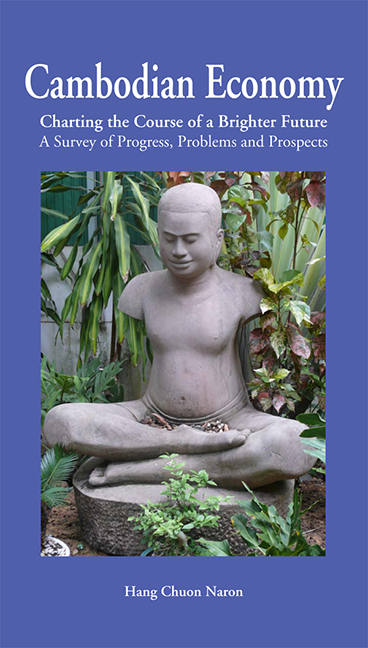 Cambodian Economy
Cambodian Economy from PART VIII - INTERNATIONAL ECONOMIC RELATIONS
Published online by Cambridge University Press: 21 October 2015
Cambodia's Integration into the Region
In April 1999, Cambodia became a member of the Association of Southeast Asian Nations (ASEAN). Economic cooperation within ASEAN led to the establishment of a free trade area. Cambodia is also part of the Greater Mekong Sub-region (GMS). Cambodia's regional cooperation activities now include a new regional grouping referred to as “ASEAN Plus Three,” that brings in China, Japan, and South Korea to the regional grouping, as well as the ASEAN Regional Forum (ARF), a dialogue facility focusing on issues of regional security. In 2004, Cambodia became a member of the World Trade Organization (WTO) and began to attend other forums, including the Asia-Europe Meeting (ASEM).
As a relatively new member, Cambodia has been able to take advantage of numerous initiatives put in place by the more developed partners for new members and less developed members of ASEAN, including the ASEAN Integration System of Preferences (AISP) (349 articles). Further framework agreements with ASEAN's partners have also brought benefits to Cambodia, among these being the Special and Preferential Tariff (SPT) with China (297 articles), the General System of Preferences (GSP) with Japan (226 articles) and the Republic of Korea (78 articles). Cambodia has continued its efforts to grasp South- South trade development opportunities within ASEAN and with non-member countries. The government is currently studying the potential of integrating the Global System of Tariff Preferences among developing countries that are desirous of promoting trade flows.
Upon becoming a member of ASEAN, Cambodia became a part of the ASEAN Free Trade Area (AFTA). The AFTA agreement was signed in Singapore on January 28, 1992 at the time of the Fourth ASEAN Summit in order to lay the foundation of a common market. The scope of the agreement covers products defined on a sectoral basis, with a certain added value content and originating within the free trade area. Setting up the free trade area was the first challenge for Cambodia in the long term process of integrating with the ASEAN.
To save this book to your Kindle, first ensure [email protected] is added to your Approved Personal Document E-mail List under your Personal Document Settings on the Manage Your Content and Devices page of your Amazon account. Then enter the ‘name’ part of your Kindle email address below. Find out more about saving to your Kindle.
Note you can select to save to either the @free.kindle.com or @kindle.com variations. ‘@free.kindle.com’ emails are free but can only be saved to your device when it is connected to wi-fi. ‘@kindle.com’ emails can be delivered even when you are not connected to wi-fi, but note that service fees apply.
Find out more about the Kindle Personal Document Service.
To save content items to your account, please confirm that you agree to abide by our usage policies. If this is the first time you use this feature, you will be asked to authorise Cambridge Core to connect with your account. Find out more about saving content to Dropbox.
To save content items to your account, please confirm that you agree to abide by our usage policies. If this is the first time you use this feature, you will be asked to authorise Cambridge Core to connect with your account. Find out more about saving content to Google Drive.